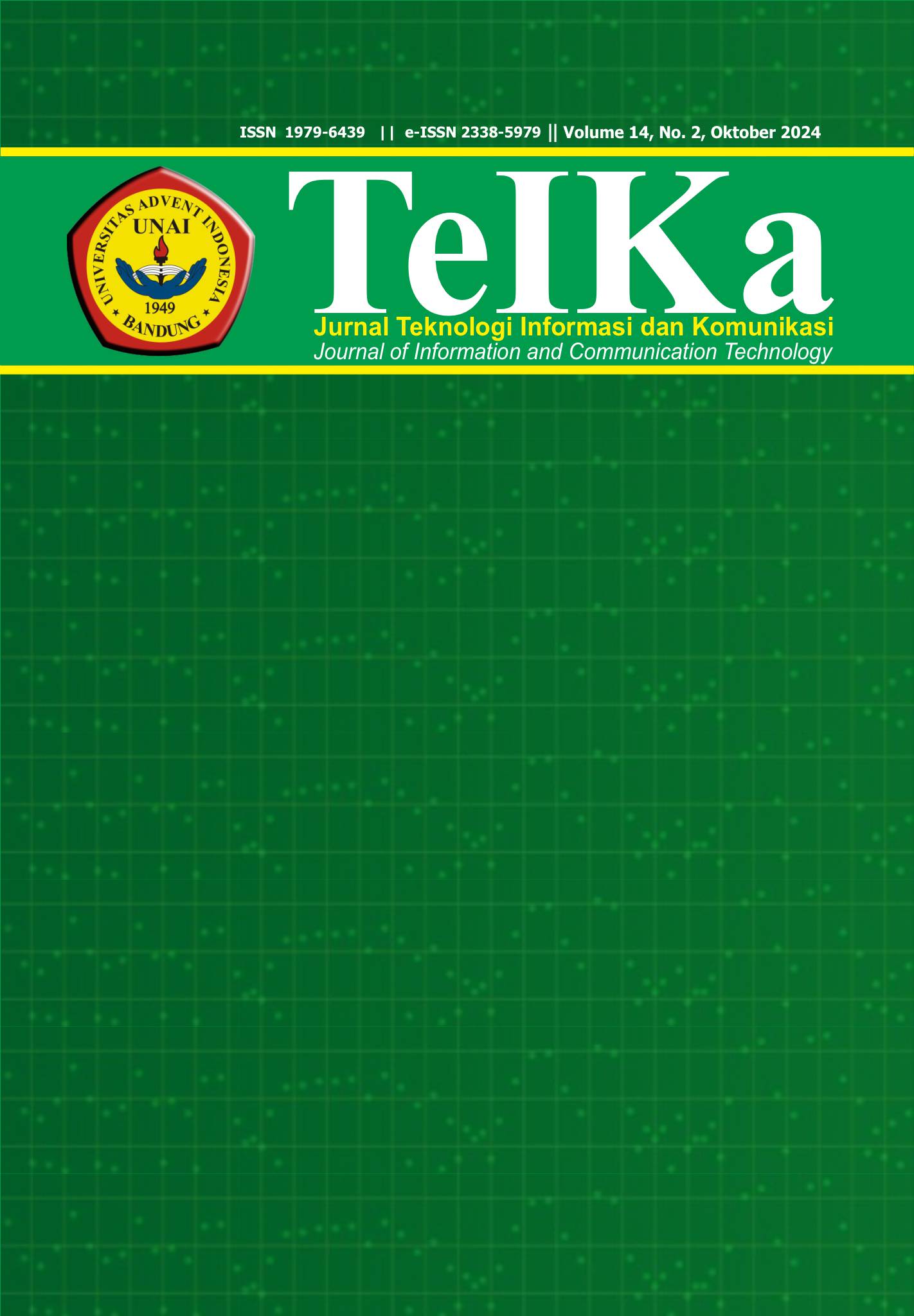Pembatasan Jarak Presensi Dalam Sistem Presensi Daring Menggunakan Formula Haversine
Kata Kunci:
DSRM, Formula Haversine, Presensi, Extreme Programming, RadiusAbstrak
Transformasi sistem presensi manual menjadi sistem daring sudah banyak dilakukan berbagai pihak, mulai dari instansi pemerintah, perkantoran, dan sekolah. Sebagai contoh suatu sekolah yang telah menerapkan sistem manajemen pembelajaran berbasis elektronik dapat menggunakan fitur formulir kehadiran sebagai salah satu cara mendata kehadiran siswanya dalam proses pembelajaran. Akan tetapi fitur ini dirasa memiliki kekurangan apabila diterapkan pada saat pembelajaran tatap muka di kelas sebab siswa yang tidak hadir masih dapat mengisi darimana saja dia berada asalkan dapat mengakses form tersebut. Adanya batasan dalam radius diperlukan guna membatasi hanya siswa yang berada dalam jangkauan area kelas saja yang dapat mengisi form kehadiran. Tujuan dari penelitian ini ialah merancang sebuah sistem presensi daring dengan menerapkan formula haversine menggunakan metode Extreme Programming. Formula ini dipilih sebab cocok untuk menghitung jarak antara dua titik koordinat pada permukaan bumi dengan anggapan bumi berbentuk bulat. Extreme Programming merupakan sebuah metode pembangunan sistem perangkat lunak cepat yang terdiri atas fase perencanaan, perancangan, koding, dan pengujian. Melalui percobaan sebanyak 30 kali didapatkan prosesntase sebanyak 96,6% yang menunjukkan bahwa formula haversine dapat diterapkan guna membatasi jarak pada suatu sistem presensi.
Unduhan
Referensi
S. Sultana, A. Enayet, and I. J. Mouri, “A Smart, Location Based Time and Attendance Tracking System using Android Application,” International Journal of Computer Science, Engineering and Information Technology, vol. 5, no. 1, pp. 01–05, Feb. 2015, doi: 10.5121/ijcseit.2015.5101.
A. P. Aldya, A. Rahmatulloh, and M. Fachurroji, “HAVERSINE FORMULA UNTUK MEMBATASI JARAK PADA APLIKASI PRESENSI ONLINE,” vol. 4, no. 2, 2019.
A. Fali Oklilas, D. Siswanti, and M. Dieka Rachman, “Akurasi Pembacaan GPS pada Android untuk Location Based Service (Studi Kasus: Informasi Lokasi SMA di Palembang) Reading Accuracy GPS in Android for Location Based Service (case study: Location Information of Senior High School in Palembang)”, [Online]. Available: http://journal.ipb.ac.id/index.php/jika
E. Yulsilviana, P. Adytia, and I. N. Riandika, “PENCARIAN DRIVER DRY CLEAN TERDEKAT DENGAN METODE HAVERSINE FORMULA,” Sebatik, vol. 25, no. 1, Jun. 2021, doi: 10.46984/sebatik.v25i1.1210.
C. N. Alam, K. Manaf, ) Aldy, R. Atmadja, ) Digital, and K. Aurum, “Implementation of Haversine Formula for Counting Event Visitor in The Radius Based on Android Application 1).”
D. R. Amalia, “PENINGKATAN AKURASI PENENTUAN LOKASI PADA APLIKASI ANDROID MENGGUNAKAN ASSISTED GPS (A-GPS) DAN KALMAN FILTER,” 2020.
A. Hevner and J. Park, “Design Science in Information Systems Research,” 2004. [Online]. Available: https://www.researchgate.net/publication/201168946
Q. Deng and S. Ji, “A Review of Design Science Research in Information Systems: Concept, Process, Outcome, and Evaluation,” Pacific Asia Journal of the Association for Information Systems, pp. 1–36, 2018, doi: 10.17705/1pais.10101.
K. Peffers, T. Tuunanen, M. A. Rothenberger, and S. Chatterjee, “A design science research methodology for information systems research,” Journal of Management Information Systems, vol. 24, no. 3, pp. 45–77, 2007, doi: 10.2753/MIS0742-1222240302.
Fidi Supriadi, Y. Yan Sofiyan, and Muhammad Agreindra Helmiawan, “A Model of Virtual Learning Environments Using Micro-Lecture.”
L. Sadath, K. Karim, and S. Gill, “Extreme programming implementation in academia for software engineering sustainability,” in 2018 Advances in Science and Engineering Technology International Conferences, ASET 2018, Institute of Electrical and Electronics Engineers Inc., Jun. 2018, pp. 1–6. doi: 10.1109/ICASET.2018.8376925.
S. Nidhra, “Black Box and White Box Testing Techniques - A Literature Review,” International Journal of Embedded Systems and Applications, vol. 2, no. 2, pp. 29–50, Jun. 2012, doi: 10.5121/ijesa.2012.2204.
##submission.downloads##
Diterbitkan
Cara Mengutip
Terbitan
Bagian
Lisensi
Hak Cipta (c) 2024 TeIKa

Artikel ini berlisensiCreative Commons Attribution-ShareAlike 4.0 International License.
The submitting author warrants that the submission is original and that she/he is the author of the submission together with the named co-authors; to the extend the submission incorporates text passages, figures, data or other material from the work of others, the submitting author has obtained any necessary permission.
Articles in this journal are published under the Creative Commons Share Alike Attribution Licence (CC-BY-SA What does this mean?). This is to get more legal certainty about what readers can do with published articles, and thus a wider dissemination and archiving, which in turn makes publishing with this journal more valuable for you, the authors.
By submitting an article the author grants to this journal the non-exclusive right to publish it. The author retains the copyright and the publishing rights for his article without any restrictions.










